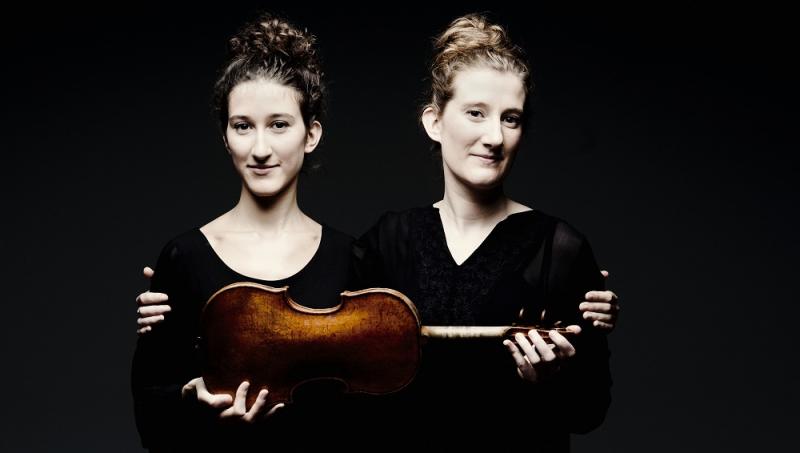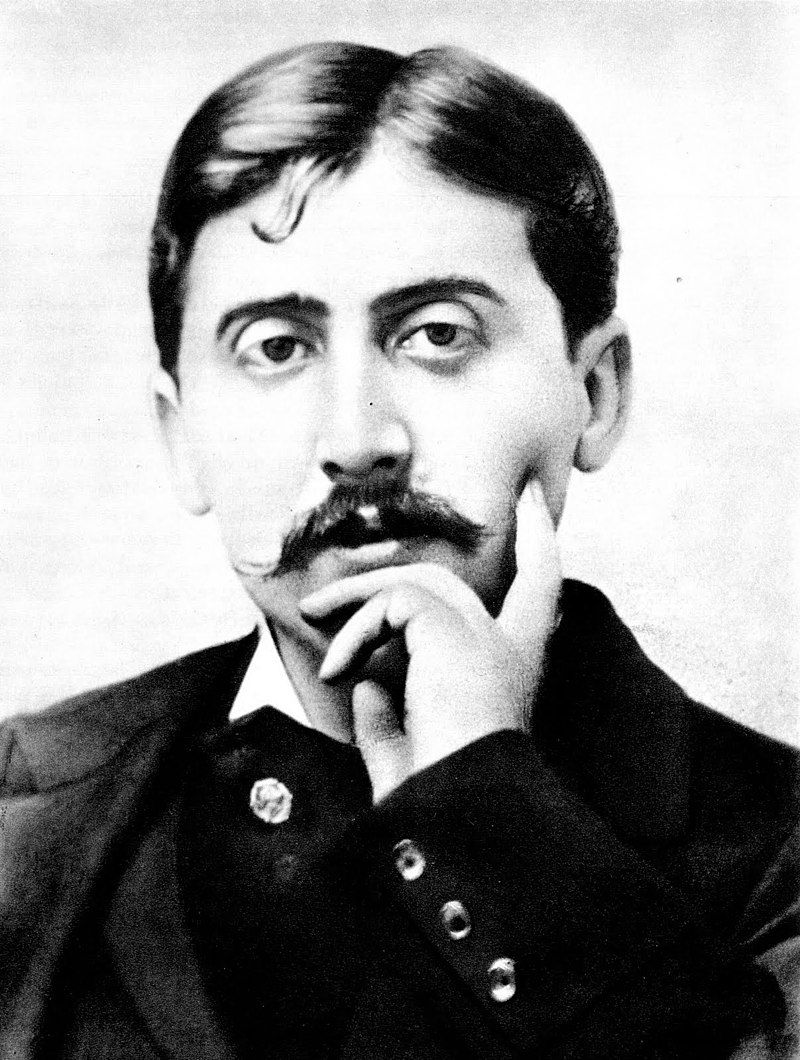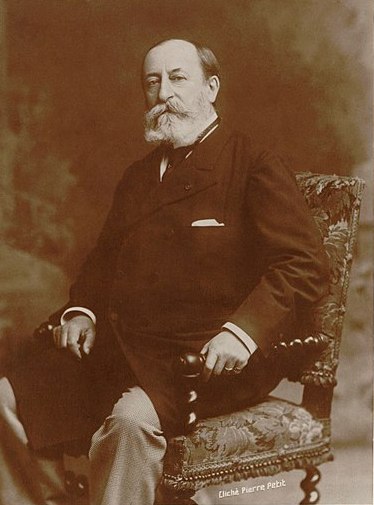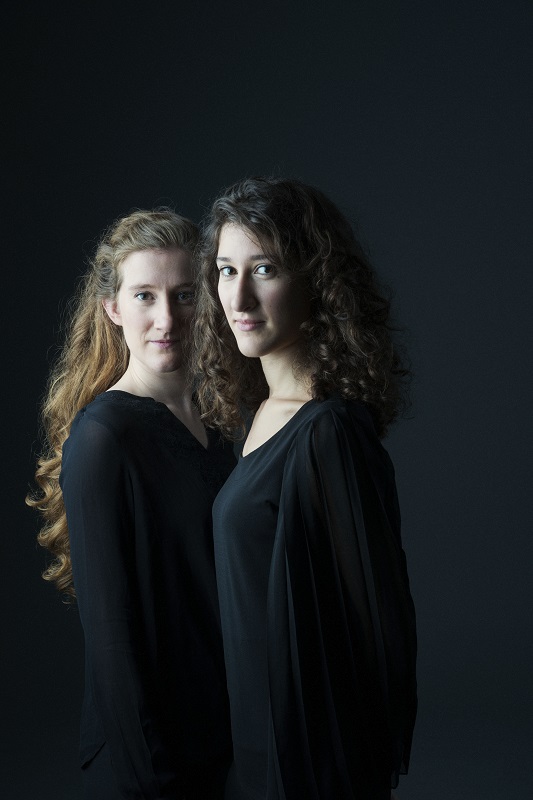In search of Proust's 'Vinteuil Sonata': violinist Maria Milstein on the writer's musical mystery | reviews, news & interviews
In search of Proust's 'Vinteuil Sonata': violinist Maria Milstein on the writer's musical mystery
In search of Proust's 'Vinteuil Sonata': violinist Maria Milstein on the writer's musical mystery
How French composers' works for violin and piano complement 'In Search of Lost Time'

I remember very well the first time I read Swann’s Way, the first part of Marcel Proust’s monumental masterpiece, In Search of Lost Time (À la recherche du temps perdu).
Swann, one of the main characters in the novel, is a rich young man living in Paris who is connected with the highest Parisian aristocracy. At a musical soirée one evening he hears a sonata played by the invited pianist and suddenly recognises the music as the mysterious sonata for violin and piano that he had first heard some time ago and which had made a strong impression on him then. Hearing this music again makes him realise exactly what it was that fascinated him – a petite phrase (little phrase) that appeared in the slow movement and returned later in the last movement. He discovers during the course of the evening that this piece was recently written by a composer named Vinteuil. Swann’s obsession with the sonata grows and he starts to identify the "little phrase" with his love for Odette de Crécy, whom he meets at the same salon. As the love between Swann and Odette develops, flourishes and then diminishes, Swann is left with a broken heart and the sonata whose petite phrase keeps haunting him, appearing every time in a different light as his feelings develop and metamorphose.
 The way Proust (pictured right in 1900) describes the Vinteuil Sonata is absolute genius, and is proof of the vast knowledge he had about music. One can almost hear the piece he is describing and many features, such as the cyclical form of the piece (the "little phrase" returns in different movements of the sonata), the texture of the piano-writing and the moods the different sections convey, make one think that the Vinteuil Sonata is based on a prototype that really exists.
The way Proust (pictured right in 1900) describes the Vinteuil Sonata is absolute genius, and is proof of the vast knowledge he had about music. One can almost hear the piece he is describing and many features, such as the cyclical form of the piece (the "little phrase" returns in different movements of the sonata), the texture of the piano-writing and the moods the different sections convey, make one think that the Vinteuil Sonata is based on a prototype that really exists.
Since the publication of Swann’s Way in 1913 there have been numerous speculations about the possible model for the Vinteuil Sonata. Proust was a fervent music-lover who, partly through his relationship with the composer Reynaldo Hahn and partly through the cultural circles in which he moved, was introduced to the broad musical spectrum of turn-of-the-century Paris salons. Proust’s musical taste was cosmopolitan; he was a great admirer of Beethoven and Wagner, but also very interested in his contemporaries, such as Franck, Fauré and Debussy. When analysing the descriptions of the Vinteuil Sonata one can actually identify several possible candidates, including the violin sonatas of Franck, Fauré and Lekeu, which are often mentioned as plausible models.
In one of his letters, however, Proust does say that the inspiration for the description of la petite phrase was a “charming but mediocre theme from a sonata of Saint-Saëns”. Camille Saint-Saëns‘ First Violin Sonata, written several years before the completion of the novel, does indeed feature a second theme in the first movement (whose candour and apparent naivety perhaps made Proust consider it mediocre) which not only seems to correspond to the description of the "little phrase", but also returns as the apotheosis of the last movement.
 The Saint-Saëns Sonata (the composer, pictured left, also in 1900) was therefore my departure point for this rather ambitious project of recording an album inspired by the Vinteuil Sonata and the mystery surrounding it. My wish was not to unite in one recording all the possible prototypes – that would far exceed the length of a disc – but rather to recreate the atmosphere of a musical salon, such as Proust might have attended.
The Saint-Saëns Sonata (the composer, pictured left, also in 1900) was therefore my departure point for this rather ambitious project of recording an album inspired by the Vinteuil Sonata and the mystery surrounding it. My wish was not to unite in one recording all the possible prototypes – that would far exceed the length of a disc – but rather to recreate the atmosphere of a musical salon, such as Proust might have attended.
In our search for suitable repertoire my sister and I discovered the Violin Sonata Op. 36 by Gabriel Pierné, then totally unknown to us. Pierné, a turn-of-the-century composer, was also a renowned conductor who premiered and championed many works of his more famous contemporaries, among whom was his close friend Claude Debussy. Pierné’s Violin Sonata, very impressionistic in its writing and rather demanding – as much for the pianist as for the violinist – amazed us with the freshness and variety of its melodies and the harmonic beauty underlying these fluid melodic lines. For us the dreamy second movement was a special coup de coeur. And the second theme from the first movement of this sonata also returns in the finale. We immediately felt that this unfairly forgotten piece had to feature in our project.
Immersing myself deeper into the atmosphere of the novel with its broad and versatile use of associations, memories and flashbacks, I realised more and more that the musical counterpart of Proust, who changed the path of literature, would be Claude Debussy, who changed the path of classical music just as drastically. A contemporary of Proust, whose music was most probably known to the writer, Debussy composed his Violin Sonata just a few years after the publication of Swann's Way in 1917. This sonata, with its mysterious opening (which returns as a flashback at the beginning of the last movement), awakens in the listener a whole world of associations; sometimes one can taste a flavour of Spain, sometimes one hears the sea, especially in the tempestuous last movement. For me, the introspective and sometimes dream-like quality of the music made a very logical link with Proust's novel and the Vinteuil Sonata with its elusive "little phrase".
 To make the album complete we had to include works by Reynaldo Hahn, the lover and close friend of Proust, who played a significant role in the writer's growing passion for music. Instead of choosing a piece for violin and piano I decided to turn to Hahn's songs, some of which are true gems and probably among his most beloved works. "À Chloris" is a neo-baroque song in which the unnamed narrator sings of his love to Chloris; the allusion to Bach and his contemporaries suspends this song in time, the craving for a past long gone transcending the piece. "L'Heure Exquise", based on a poem by Paul Verlaine, invites the listener to forget the passing of time and fully enjoy the exquisite moment; "Rêvons, c'est l'heure" ("Let's dream, it is time") could also be an appropriate title for our album. Making the choice to arrange these songs for violin and piano – thereby leaving the texts aside – was very conscious, not only because both songs work wonderfully on the violin, but also because the lack of text creates a sense of mystery, leaving one to guess what the song could be about.
To make the album complete we had to include works by Reynaldo Hahn, the lover and close friend of Proust, who played a significant role in the writer's growing passion for music. Instead of choosing a piece for violin and piano I decided to turn to Hahn's songs, some of which are true gems and probably among his most beloved works. "À Chloris" is a neo-baroque song in which the unnamed narrator sings of his love to Chloris; the allusion to Bach and his contemporaries suspends this song in time, the craving for a past long gone transcending the piece. "L'Heure Exquise", based on a poem by Paul Verlaine, invites the listener to forget the passing of time and fully enjoy the exquisite moment; "Rêvons, c'est l'heure" ("Let's dream, it is time") could also be an appropriate title for our album. Making the choice to arrange these songs for violin and piano – thereby leaving the texts aside – was very conscious, not only because both songs work wonderfully on the violin, but also because the lack of text creates a sense of mystery, leaving one to guess what the song could be about.
The mystery around the Vinteuil Sonata remains unsolved and every reader should be able to hear his or her "own" Vinteuil Sonata. This album, rather than dictating an answer, is merely suggesting a possible approach, and will hopefully prompt the listeners who haven't yet read Proust's masterpiece to plunge into the great novel In Search of Lost Time.
- Maria and Nathalia Milstein's new CD, 'The Vinteuil Sonata', reviewed by Graham Rickson in his weekly Classical CDs column
- Read more classical reviews on theartsdesk
Share this article
The future of Arts Journalism
You can stop theartsdesk.com closing!
We urgently need financing to survive. Our fundraising drive has thus far raised £49,000 but we need to reach £100,000 or we will be forced to close. Please contribute here: https://gofund.me/c3f6033d
And if you can forward this information to anyone who might assist, we’d be grateful.

Subscribe to theartsdesk.com
Thank you for continuing to read our work on theartsdesk.com. For unlimited access to every article in its entirety, including our archive of more than 15,000 pieces, we're asking for £5 per month or £40 per year. We feel it's a very good deal, and hope you do too.
To take a subscription now simply click here.
And if you're looking for that extra gift for a friend or family member, why not treat them to a theartsdesk.com gift subscription?
more Classical music
 Alfred Brendel 1931-2025 - a personal tribute
A master of feeling and intellect
Alfred Brendel 1931-2025 - a personal tribute
A master of feeling and intellect
 Aldeburgh Festival, Weekend 2 review - nine premieres, three young ensembles - and Allan Clayton
A solstice sunrise swim crowned the best of times at this phoenix of a festival
Aldeburgh Festival, Weekend 2 review - nine premieres, three young ensembles - and Allan Clayton
A solstice sunrise swim crowned the best of times at this phoenix of a festival
 RNCM International Diploma Artists, BBC Philharmonic, MediaCity, Salford review - spotting stars of tomorrow
Cream of the graduate crop from Manchester's Music College show what they can do
RNCM International Diploma Artists, BBC Philharmonic, MediaCity, Salford review - spotting stars of tomorrow
Cream of the graduate crop from Manchester's Music College show what they can do
 Classical CDs: Bells, whistles and bowing techniques
A great pianist's early recordings boxed up, plus classical string quartets, French piano trios and a big American symphony
Classical CDs: Bells, whistles and bowing techniques
A great pianist's early recordings boxed up, plus classical string quartets, French piano trios and a big American symphony
 Monteverdi Choir, English Baroque Soloists, Suzuki, St Martin-in-the-Fields review - the perfect temperature for Bach
A dream cantata date for Japanese maestro and local supergroup
Monteverdi Choir, English Baroque Soloists, Suzuki, St Martin-in-the-Fields review - the perfect temperature for Bach
A dream cantata date for Japanese maestro and local supergroup
 Aldeburgh Festival, Weekend 1 review - dance to the music of time
From Chekhovian opera to supernatural ballads, past passions return to life by the sea
Aldeburgh Festival, Weekend 1 review - dance to the music of time
From Chekhovian opera to supernatural ballads, past passions return to life by the sea
 Dandy, BBC Philharmonic, Storgårds, Bridgewater Hall, Manchester review - a destination attained
A powerful experience endorses Storgårds’ continued relationship with the orchestra
Dandy, BBC Philharmonic, Storgårds, Bridgewater Hall, Manchester review - a destination attained
A powerful experience endorses Storgårds’ continued relationship with the orchestra
 Hespèrion XXI, Savall, QEH review - an evening filled with laughter and light
An exhilarating exploration of innovation in 16th and 17th century repertoire
Hespèrion XXI, Savall, QEH review - an evening filled with laughter and light
An exhilarating exploration of innovation in 16th and 17th century repertoire
 theartsdesk at the Dublin International Chamber Music Festival - musical revelations, nature beyond
Artistic director Ciara Higgins’ programming ensures plenty of surprises
theartsdesk at the Dublin International Chamber Music Festival - musical revelations, nature beyond
Artistic director Ciara Higgins’ programming ensures plenty of surprises
 Müller-Schott, RSNO, Søndergård, Usher Hall, Edinburgh - spectacular Shostakovich to end the season
Brilliant orchestral results, while the cellist walks a tightrope in the Second Cello Concerto
Müller-Schott, RSNO, Søndergård, Usher Hall, Edinburgh - spectacular Shostakovich to end the season
Brilliant orchestral results, while the cellist walks a tightrope in the Second Cello Concerto

Add comment